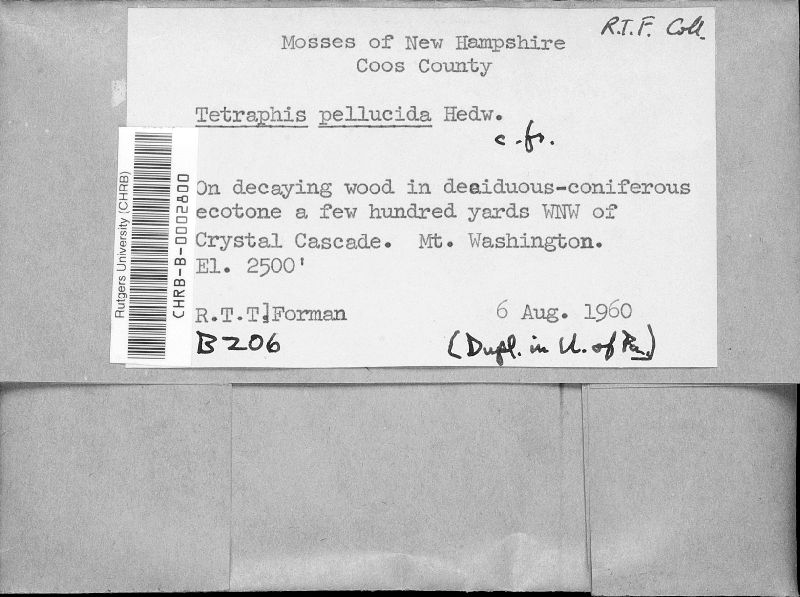Tetraphis
|
Family: Tetraphidaceae |
Plants small, green distally, reddish brown proximally. Thallose protonematal flaps not persistent. Stems many, 0.8-1.5 cm, rarely taller, naked proximally, densely foliate distally. Leaves spreading, keeled, pellucid when moist, slightly contorted when dry, variable in size and shape, 1-3 mm, proximal leaves ovate to ovate-lanceolate; costa ending well before the apex, distal leaves linear, acute to acuminate, margins entire, broadly reflexed, costa subpercurrent; laminal cells thick-walled, irregularly rounded-hexagonal in distal leaf and becoming oblong-linear near leaf base. Specialized asexual structures: stalked, discoid gemmae borne in rosette of rounded bracts formed on top of vegetative stem, usually present in both sterile and fertile material. Sexual condition with antheridia among numerous paraphyses adjacent to the archegonia; perichaetial leaves lanceolate, long-acuminate, entire. Seta 6-17 mm, straight, smooth, cells spirally twisted throughout or smooth, occasionally small sections of straight cells papillose by projecting cell ends (prorulate) near the base, or geniculate, cells smooth and spirally twisted below the bend but cells straight, prorulate beyond the bend. Capsule narrowly cylindric, 2-3 mm, symmetric or slightly curved, brown to reddish brown; operculum conic; peristome teeth occasionally splitting when dry and appearing to be more than four. Calyptra, smooth, whitish. Spores papillose. |

